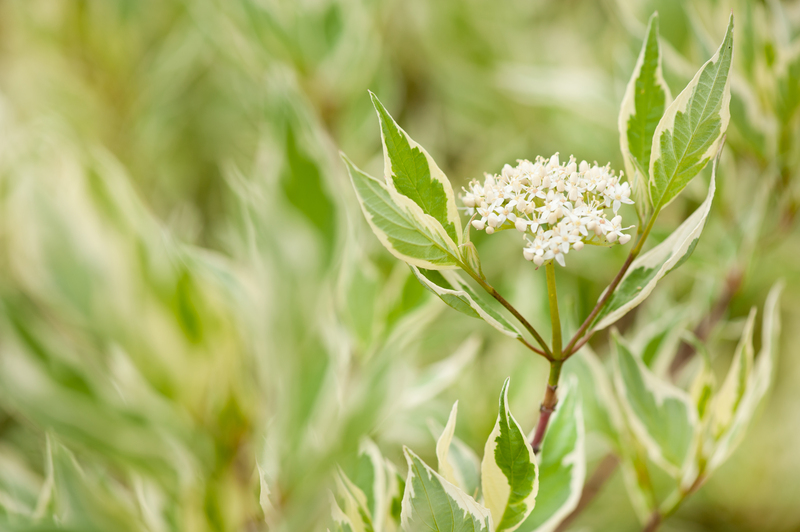Discover the 10 Best Evergreen Trees for Small Gardens
Dreaming of a lush, green outdoor space all year round? Evergreen trees are the perfect solution for small gardens, providing not only color and texture through every season, but also privacy, shelter, and often a touch of fragrance. In this comprehensive guide, discover the 10 best evergreen trees for small gardens and expert tips to help you select and maintain them for long-lasting beauty.
Why Choose Evergreen Trees for Your Small Garden?
Evergreen trees retain their foliage throughout the year, offering greenery and structure to your landscape even in the bleakest winter months. They serve multiple purposes, such as acting as privacy screens, windbreaks, or simply as beautiful focal points. For those with limited outdoor space, carefully selected evergreen varieties can maximize impact without overwhelming the garden.
Advantages of Evergreens in Small Gardens
- Year-round beauty: Evergreen trees maintain their leaves regardless of season, ensuring constant visual interest.
- Low maintenance: Many evergreens require minimal pruning, making them ideal for busy gardeners.
- Wildlife friendly: Creatures large and small find shelter and sometimes food among their branches.
- Privacy and screening: Dense evergreen foliage can create privacy screens or hedging even in urban spaces.
- Compact varieties available: Numerous options are suitable for even the smallest plots, containers, or courtyard gardens.
How to Choose the Right Evergreen Tree for Small Spaces
When selecting evergreens for compact gardens, consider the tree's final height, spread, growth rate, and root system. Choose slow-growing or dwarf varieties that won't outgrow their spot or dominate neighboring plants. It's wise to check the specific sun and soil requirements for each species to ensure healthy, vigorous growth.
Tip: Consulting local nurseries or horticultural societies can provide valuable insights specific to your region's climate and soils.

Top 10 Evergreen Trees Perfect for Small Gardens
Ready to elevate your outdoor oasis? Here's our expert-curated list of the best evergreen trees for compact gardens, including care guidelines, design suggestions, and reasons each could be the star of your small space.
1. Boxwood (Buxus sempervirens)
- Height/Spread: 3-5 ft tall, 3-4 ft wide (dwarf cultivars available)
- Care: Thrives in partial to full sun; tolerates a range of soils
- Why it's great: Compact, dense foliage; can be shaped into topiary or formal hedging; classic elegance suited for all garden styles.
Boxwood is ideal for formal and structured designs. Its neat, slow-growing habit means minimal maintenance, and varieties like 'Green Velvet' or 'Suffruticosa' are perfect for pots or borders.
2. Dwarf Alberta Spruce (Picea glauca 'Conica')
- Height/Spread: 6-8 ft tall, 3-4 ft wide at maturity
- Care: Prefers full sun and well-drained soil
- Why it's great: Conical, symmetrical shape; slow-growing; excellent for container gardening; looks stunning as a pair flanking entryways.
The Dwarf Alberta Spruce is a classic for adding permanent structure to even the tiniest gardens thanks to its tidy silhouette and year-round color.
3. Japanese Holly (Ilex crenata)
- Height/Spread: 3-6 ft tall, 3-6 ft wide (dwarf varieties available)
- Care: Adaptable to sun or partial shade; moist, well-drained soil preferred
- Why it's great: Boxwood look-alike with tiny, dark leaves and reliable structure; tolerant of urban conditions and ideal for hedging or accent planting.
Japanese Holly adds fine texture and evergreen interest to borders and containers. 'Sky Pencil' is an ultra-narrow form, perfect for vertical accents in small gardens.
4. Bay Laurel (Laurus nobilis)
- Height/Spread: 6-12 ft tall, easily pruned smaller
- Care: Prefers sun to partial shade; well-drained soil; drought tolerant once established
- Why it's great: Edible aromatic leaves (excellent in the kitchen); handsome, glossy foliage; respond well to pruning and topiary.
Try Bay Laurel as a statement patio tree or clipped into formal shapes near entrances. Their culinary uses are a bonus for food lovers!
5. Dwarf Southern Magnolia (Magnolia grandiflora 'Little Gem')
- Height/Spread: 8-15 ft tall, 6-8 ft wide
- Care: Full sun; moist, rich soil; tolerant once established
- Why it's great: Evergreen glossy leaves; produces large, fragrant white blooms from spring through summer; compact habit suits tighter spaces.
If you desire an evergreen flowering tree, 'Little Gem' magnolia provides a stunning focal point with minimum fuss.
6. Portuguese Laurel (Prunus lusitanica)
- Height/Spread: 10-15 ft tall, can be pruned to 6 ft
- Care: Sun or part shade; well-drained soil
- Why it's great: Dense, dark green foliage; white flower spikes in early summer; works as a privacy screen, standalone tree, or clipped hedge.
Portuguese Laurel is valued for its tough constitution and ability to adapt to pruning, making it a top choice for designers crafting lush, living walls in small gardens.
7. Camellia (Camellia japonica or Camellia sasanqua)
- Height/Spread: 6-12 ft tall, 5-10 ft wide (some smaller cultivars exist)
- Care: Prefers partial shade and acidic, well-drained soil; mulch to keep roots cool
- Why it's great: Striking winter or early spring blooms in pink, red, or white; glossy evergreen leaves; slow, steady growth manageable in pots or borders.
For drama during the colder months, few plants rival Camellias for their stunning flowers and neat foliage, perfect in shaded corners of small gardens.
8. Sky Pencil Holly (Ilex crenata 'Sky Pencil')
- Height/Spread: 4-10 ft tall, 2 ft wide
- Care: Sun to part shade; well-drained, slightly acidic soil
- Why it's great: Extremely narrow, upright growth for tight spots; ideal as a vertical accent, in pots, or for stylish modern gardens.
The Sky Pencil Holly creates instant architectural interest in restricted plant beds, on patios, or flanking walkways. Its minimal footprint fits almost any limited space.
9. Mountain Pine (Pinus mugo 'Mops')
- Height/Spread: 3-5 ft tall and wide
- Care: Full sun; thrives in poor, rocky soils; drought tolerant
- Why it's great: Compact, mounded form; cheerful bright-green needles; requires virtually no pruning and is highly resilient.
Pinus mugo 'Mops' is exceptional for rock gardens, borders, or as a woody groundcover. It's both hardy and uniquely decorative--a real conversation starter.
10. Japanese Cedar (Cryptomeria japonica 'Globosa Nana')
- Height/Spread: 3-4 ft tall, 4-6 ft wide
- Care: Part shade preferred; moist, well-drained soil
- Why it's great: Soft, feathery foliage; globe-shaped habit; vibrant spring green color darkens elegantly for year-round visual appeal.
The dwarf Japanese cedar is a perfect specimen for foundation plantings or containers. Its lush texture looks spectacular when paired with contrasting evergreens or flowering shrubs.
Tips for Planting and Caring for Small Garden Evergreen Trees
- Prepare the soil: Add organic matter and check drainage prior to planting.
- Space wisely: Leave room for the tree's final mature size to ensure optimum health and form.
- Water regularly: Especially vital in the first few years of establishment.
- Mulch annually: Helps retain moisture and keeps roots cool.
- Prune as needed: Maintain desired size and shape, but avoid cutting into woody stems on some species.
- Feed lightly: Use a slow-release fertilizer formulated for evergreens if necessary.
Design Ideas: Using Evergreen Trees in Small Gardens
Evergreen trees aren't just functional -- they can be used to add dramatic effect, serene structure, and vibrant color to garden designs of any size.
- Create focal points: Use a sculptural evergreen tree near a seating area or visible from indoors for visual interest all year.
- Line pathways and entrances: Planted in pots or the ground, compact evergreens add a polished look to garden walkways and doorways.
- Add vertical accents: Columnar varieties like 'Sky Pencil' holly draw the eye upward and make borders seem longer.
- Form living screens: Densely planted evergreens form privacy barriers or shield unsightly views -- perfect for city gardens or patios.
- Integrate with perennials: Contrast evergreen forms and shades of green with bright blooms for a balanced, dynamic garden scheme.

Common Questions About the Best Evergreen Trees for Small Gardens
- Will these trees grow in containers?
Many compact evergreens thrive in pots, especially boxwood, camellia, and dwarf conifers, as long as the container is large enough and drainage is excellent. - Are they safe for pets?
Some, like yews or hollies, have toxic parts. Always check before planting if you have pets who may chew on leaves or berries. - How often do I need to prune?
Most slow-growing evergreens need little more than an annual trim, particularly if you want to maintain a specific size or shape. - Can I grow evergreens in the shade?
Some, like camellia and Japanese cedar, tolerate partial or dappled shade, but most prefer at least a few hours of sun each day. - What's the best tree for privacy in a small garden?
Consider Portuguese laurel or Japanese holly, as they are dense and amenable to pruning for a slender screen.
Conclusion: Enhance Your Small Garden with the Best Evergreen Trees
Selecting the best evergreen trees for small gardens will enrich your outdoor living space in every season. With careful planning and the right choices - from stately boxwoods and fragrant bay to vibrant flowering camellias - you can enjoy year-round greenery, privacy, and bloom in even the most compact plot.
Ready to transform your garden? Visit your local nursery armed with inspiration from this guide and start building a beautiful, low-maintenance evergreen retreat tailored to your space and taste. With these trees as your garden's backbone, you'll create a lush haven you can enjoy, no matter the season.
Explore more garden inspiration: Best plants for shade | Creative garden privacy ideas